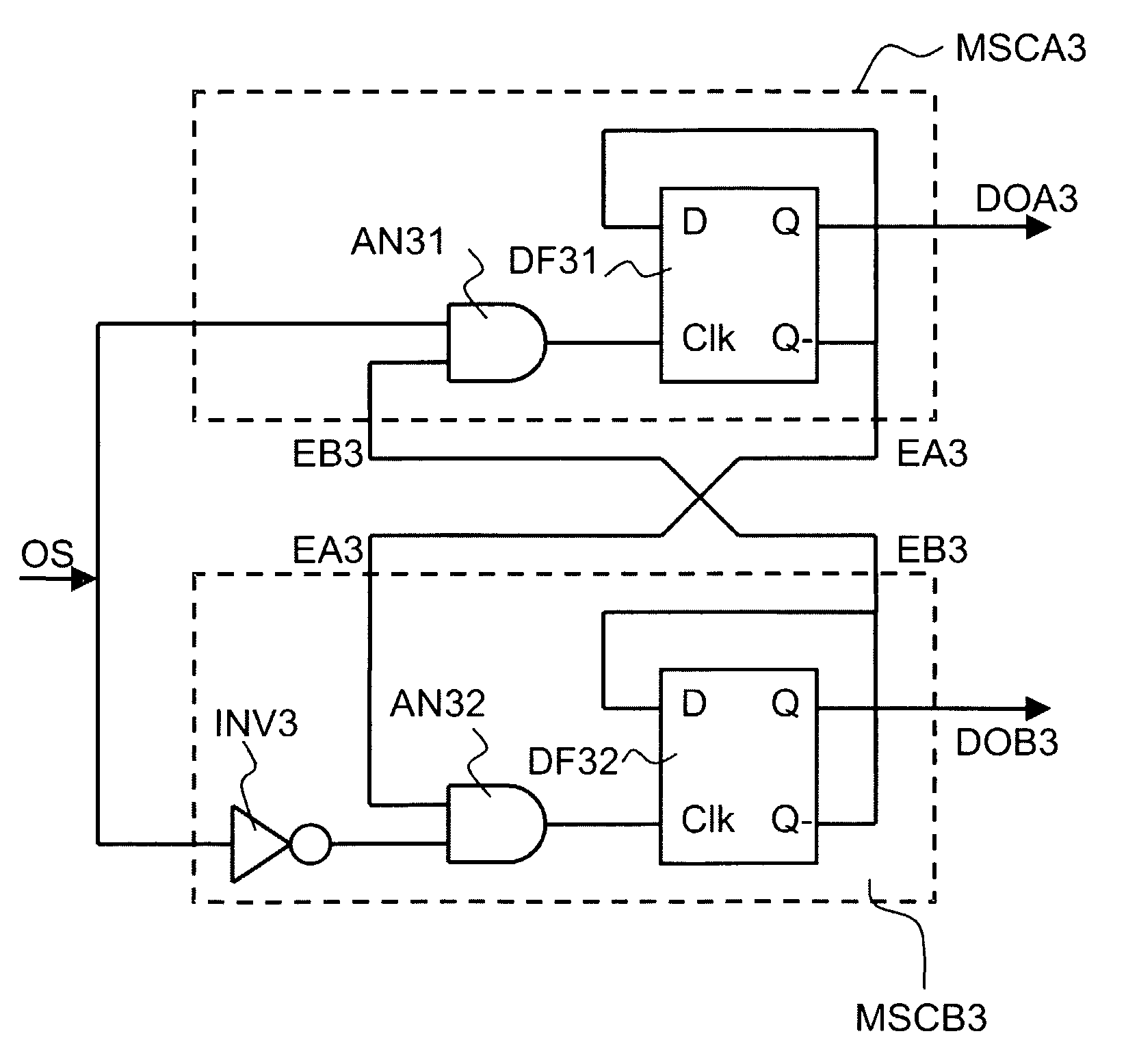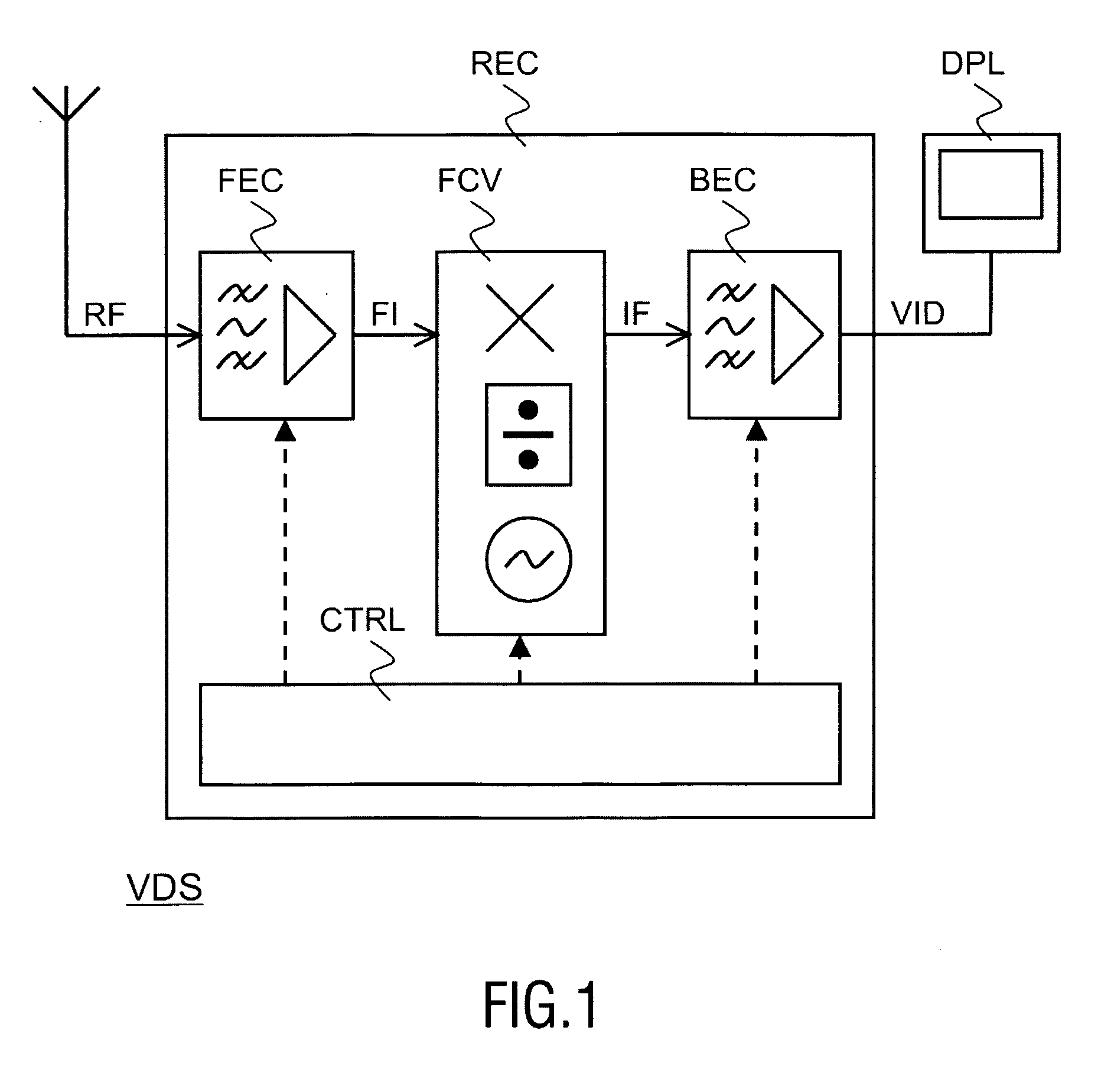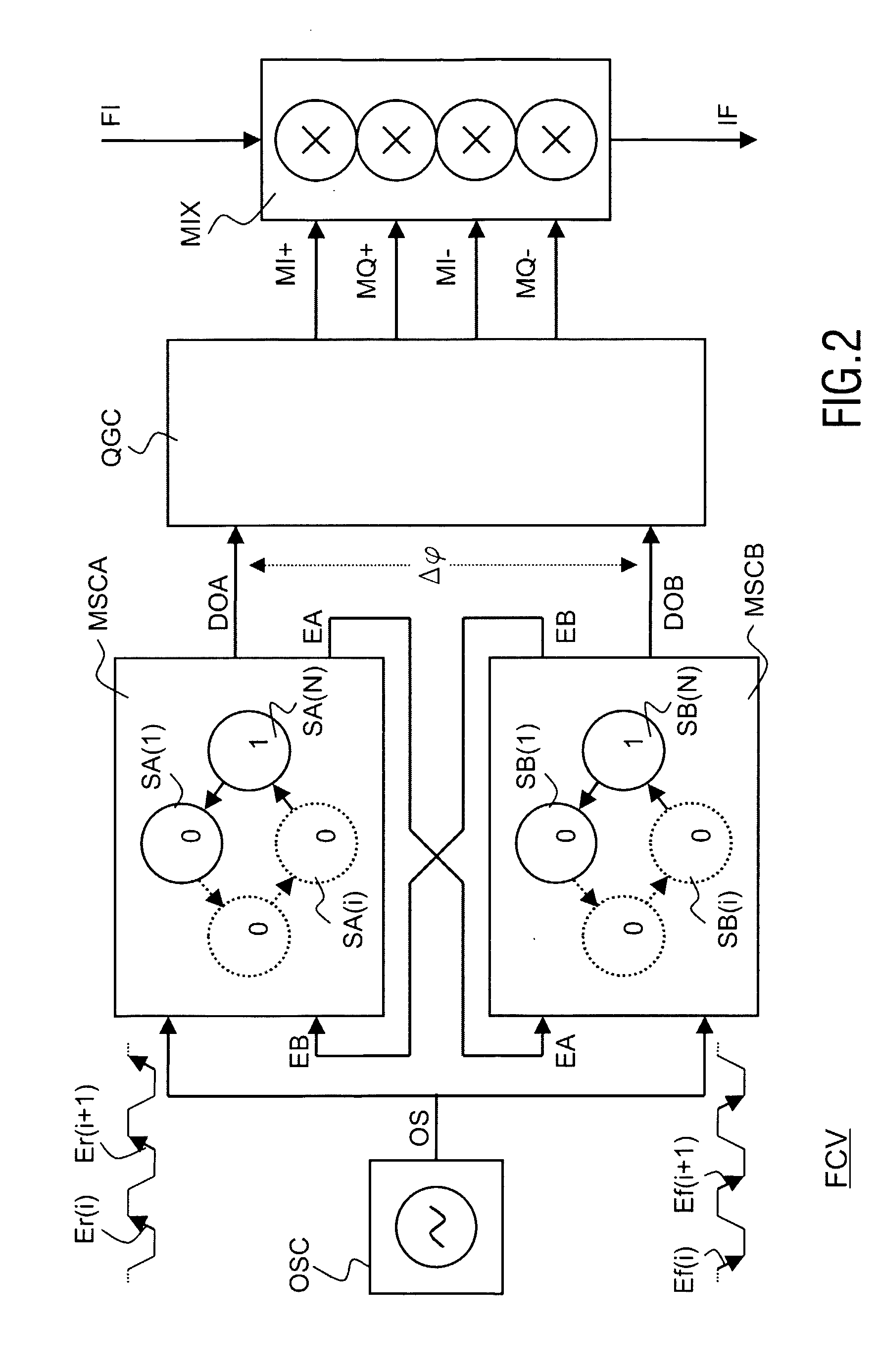Frequency-Division Circuit
a frequency-division circuit and frequency-division technology, applied in the field of frequency-division circuits, can solve the problems of imposing a high-frequency limit beyond which frequencies are no longer correctly divided, and the speed increase will generally be at the expense of higher power consumption, so as to achieve the effect of reducing power consumption and increasing the frequency limi
- Summary
- Abstract
- Description
- Claims
- Application Information
AI Technical Summary
Benefits of technology
Problems solved by technology
Method used
Image
Examples
Embodiment Construction
[0027]FIG. 1 illustrates a video display set VDS that comprises a receiver REC and a display device DPL. The receiver REC receives a radiofrequency signal RF and provides in response thereto a video signal VID. The display device DPL displays the video signal VID.
[0028]The receiver REC comprises a front-end circuit FEC, a frequency conversion circuit FCV, a back-end circuit BEC, and a control circuit CTRL. The front-end circuit FEC filters and amplifies the radiofrequency signal RF so as to obtain a frequency-conversion input signal FI. The frequency conversion circuit FCV carries out a frequency conversion so as to obtain an intermediate frequency signal IF. The intermediate frequency signal IF is a frequency-shifted version of the frequency-conversion input signal FI and thus a frequency-shifted version of the radiofrequency signal RF. The back-end circuit BEC selects a certain portion of the frequency spectrum of the intermediate frequency signal IF. The back-end circuit BEC proc...
PUM
 Login to View More
Login to View More Abstract
Description
Claims
Application Information
 Login to View More
Login to View More - R&D
- Intellectual Property
- Life Sciences
- Materials
- Tech Scout
- Unparalleled Data Quality
- Higher Quality Content
- 60% Fewer Hallucinations
Browse by: Latest US Patents, China's latest patents, Technical Efficacy Thesaurus, Application Domain, Technology Topic, Popular Technical Reports.
© 2025 PatSnap. All rights reserved.Legal|Privacy policy|Modern Slavery Act Transparency Statement|Sitemap|About US| Contact US: help@patsnap.com



